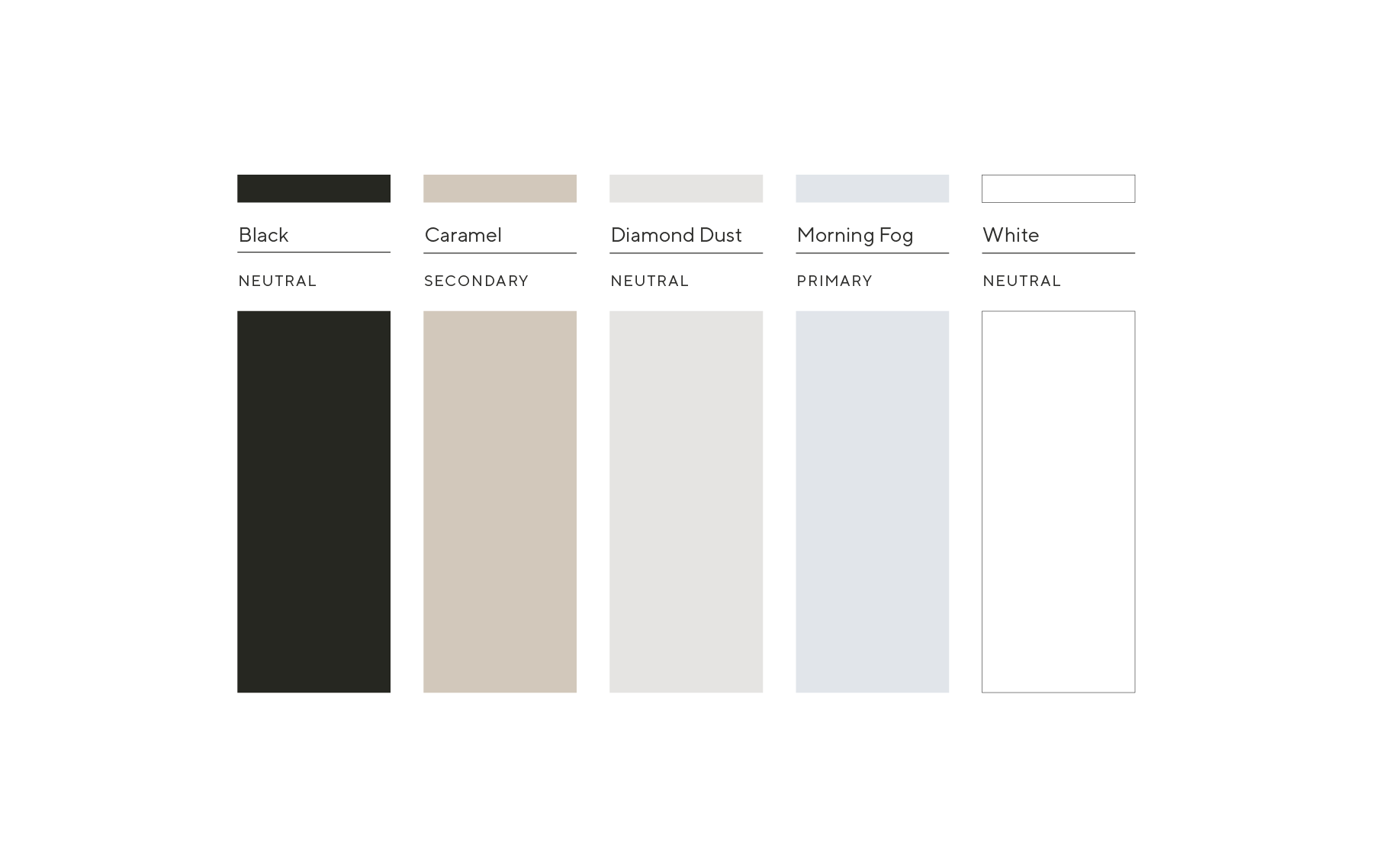Branding 101: Make your brand look and feel consistent
business tips
"How can I make my brand look and feel more consistent?"
As a branding and packaging designer, this is a question I often get asked from entrepreneurs at all stages of their businesses. Brand consistency matters if you've been in the game for a month or a decade. Think of it as the quintessential ingredient that makes your customers coming back for more. For example, it helps with:
- Brand recognition
- Communicating how unique you are
- Evoking the right emotions
- Building trust and loyalty
- Increasing sales
Brand consistency leads to an average increase in revenue of 33%.
Source: Lucid Press
Brand consistency is how a brand delivers messages aligned with its values, mission, promise, personality, and brand identity. So let’s dive deep into what it takes to craft a perfect brand consistency and create meaningful connections.
What is Branding?
Brand consistency and branding go hand in hand. But why?
Branding is not all about visuals, although they are essential; it's also how you communicate, how you’re perceived, the people you connect with, the actions you take, and the values you stand for... It's your brand essence and positioning merged to offer your audience the best on-brand experience ever.
By using consistent messaging and visual elements that represent your brand identity - like the tone of voice, logo design, colours, typography, photography, packaging - your brand can build a strong connection with your audience, increasing trust, and becoming memorable and recognizable.
And just as nature needs biodiversity to thrive, we need biodiversity in brands to create authentic opportunities. So let’s set aside the pretty trends and create thoughtful experiences, rooted in strategy.
I can hear your questions already. “But Giada, how do I find my unique path? Where do I even begin?” I feel you. I really do. So if you have doubts and feel insecure about your brand consistency, I put together the most important elements of branding for you, along with some tips and prompts to help you shine a light on your big vision.
Brand Message
First thing first, we need to focus on your message. To lay the foundations of a beautifully consistent and committed brand, you need a clear idea of what your brand stands for, your vision, mission, your values and your unique purpose. Once these elements are clear and defined, putting together your visual identity and tone of voice will be much easier.
Prompts:
- What does your brand do and why?
- How does it do it and for whom?
- What problems do you solve?
- What actions do you inspire?
- What are your brand’s values?
Perception
“Be yourself, everyone else is already taken” works for brands too. Be authentic and define what makes you unique and how you serve your audience. This will help you make decisions and position yourself in the market, as it sets customers expectations on the brand’s quality and feel.
Prompts:
- How do you want your brand to be perceived?
- How is your brand unique?
- What makes it stand out from the crowd?
- Who are you helping and talking to?
Voice
To give depth to your brand personality and communicate your message consistently through copywriting, you’ll need a specific voice. Your voice is the tone and language you use on any brand channel, from your social media profiles to your printed material. Good copywriting can make all the difference, and a copywriter can help you with that.
Prompts:
- What is your brand’s personality?
- Is your brand relaxed or formal? Is it playful or serious?
- Is it luxurious or affordable? Is it youthful or more adult and established?
Logo Design
Behind the scenes - Project: Akiabara
As humans, sometimes we’re shallow. We judge a book by its cover and a business by its logo. Plus, there are more brands now than ever. That’s why a distinctive image that represents your brand is an essential part of your toolkit if you’re hoping to create a successful brand.
Your brand is way more than your logo, but your logo is a fundamental piece of your visual identity and must look the same on every channel, whether it’s printed or online.
Your logo’s goal is to identify your business meaningfully, so it should be simple, memorable, unique, and as timeless as possible.
Trends come and go, but being authentic is never démodé.
DO
Use your logo consistently with its native colours and recommended specs. Develop secondary versions of your logo that you can use for different, or smaller applications. Think about how your logo can be versatile and scalable.
Don’t
Don’t rotate (ouch!), squeeze (ugh!) or alter your logo in any way, colour and shape, if it’s not allowed by your brand guidelines. Doing so would alterate the brand message, confuse your audience, and make your brand look inconsistent.
Colours
Brand colours are a reflection of your brand identity and evoke a strong and immediate emotional response. Colours convey feelings of excitement, confidence, joy, wonder, and safety, to name a few. Additionally, they influence how customers perceive the brand personality.
Project: RUE Botanics
A brand colour palette is a must-have, and it consists of the complete set of colours that a brand chooses as part of its visual identity. Each palette should have primary colours, secondary colours, and neutrals such as black and white.
Consistent use of colours is vital to create that sense of trust in the brand, so it is essential in every customer touch-point, from the colours on your website to the paper of your packaging.
Tip:
Keep your palette simple. Select 1-3 primary colours and to up to 2 secondary colours max. If needed, select one accent colour.
Fonts
Like colours, your brand’s fonts can make or break your visual identity.
The brand personality should be expressed in the fonts used. The right typography helps amplify your brand’s message and give your brand a unique feel.
To keep it simple, and aesthetically pleasing and professional-looking, keep your fonts to a minimum. Consider your brand personality, then select the fonts that evoke those feelings you want to communicate. Always use the same font pairings, unless you want to confuse your audience.
Tip:
Are you looking for some gorgeous fonts free for commercial use?
Check out this selection — The 40 Best Google Fonts—A Curated Collection for 2021 · Typewolf
Sensory Experience
To support brand consistency and extend your brand experience to all senses, you can also get creative with those elements that are not only visual. After all, you want to offer your audience the most memorable and on-brand experience they’ll ever get.
Tip:
Play with textures on your packaging, materials, fragrances, imagery, music, tastes... Add a few drops of your on-brand fragrance to your packaging filling. Select paper, materials and print finishes that portray your brand’s ethos and fit with your positioning. Create your on-brand playlist and share it with your customers.
Style Guidelines
To create content that reflects your brand, you’ll need a brand manual, a document that outlines all the details of your branding and how to apply them with consistency across all of your customer touchpoints.
Because brand guidelines express how a brand presents itself, they are essential to everyone in the team. They lay out all the visual details, as well as the tone of voice and messaging of the brand.
Tip:
Develop your brand style guidelines to ensure all the visual aspects such as logo, font application, colours, photography, and other brand elements are covered in the guide. When in doubt, always refer to it, so keep it handy.
Library
As well as brand guidelines, it’s essential to have a tidy and always up-to-date brand library easily accessible to everyone on your team (even if it’s just you). This can include anything from your digital branding material, such as logos, colour codes, typography files, branded imagery, patterns, social media templates, document templates, press kit, photography...
Tip:
Create separate folders for each category and name your files correctly, so they’re easy to browse and find. You can securely store and share your files with a cloud storage solution like Dropbox or Google Drive.
Related articles








